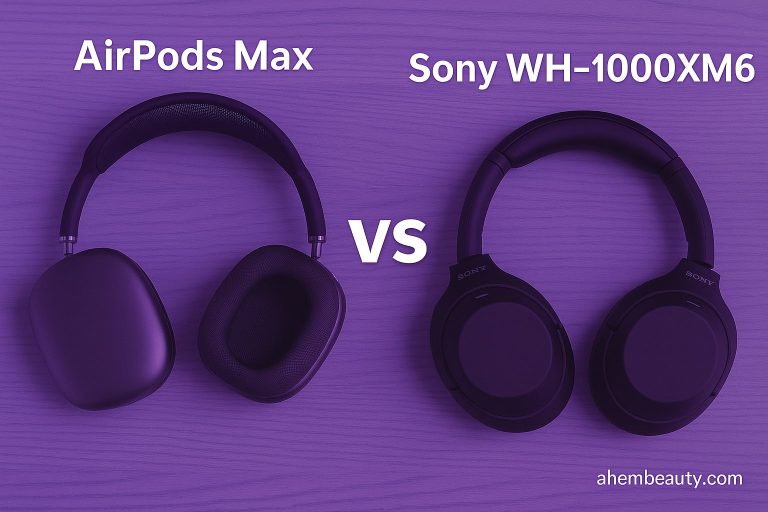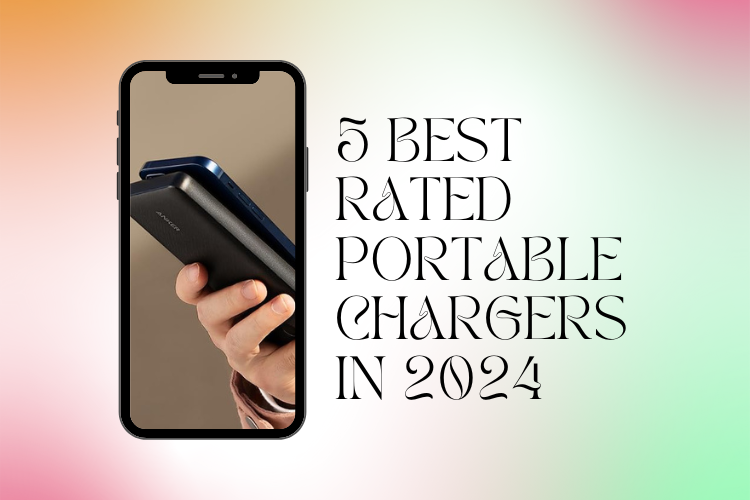Gamers Rush to Upgrade: The 7 Best PC Monitors for Gaming in 2025 Reviewed
Gamers in 2025 are upgrading fast. Discover the best PC monitors for gaming with fast refresh rates, sharp visuals, and expert-tested picks.
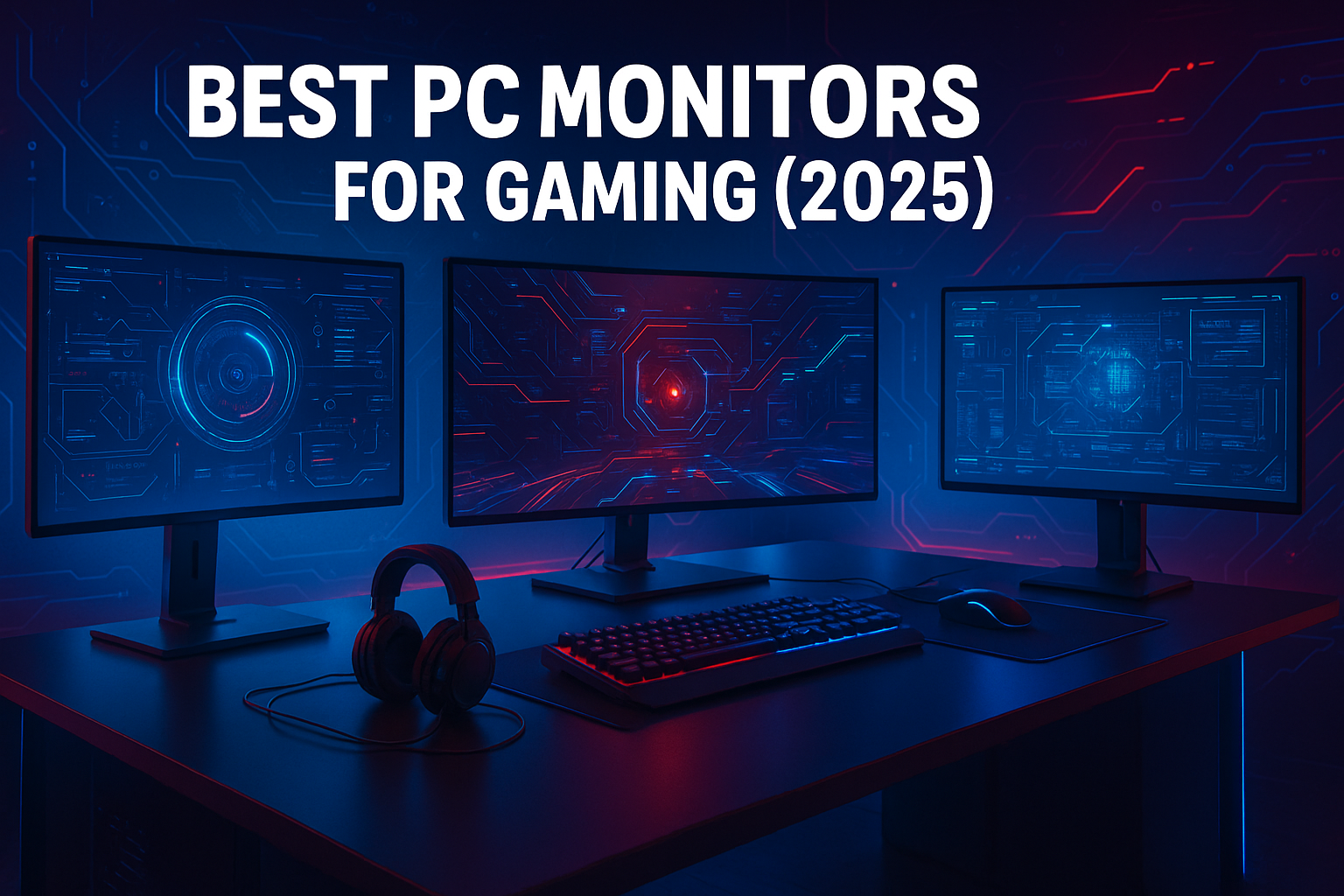
In 2025, gamers are upgrading their setups faster than ever — and monitors are taking center stage. With competitive titles demanding faster response times and richer visuals, the best PC monitors for gaming have quickly become the most talked-about gear in the industry. Tech brands are rolling out displays with ultra-fast refresh rates, adaptive sync, and eye-comfort designs, and early reviews suggest they’re reshaping how players experience everything from eSports battles to cinematic adventures.
But which screens truly live up to the hype? With dozens of “next-gen” monitors making headlines, it’s hard to know where to invest your money. That’s why we’ve put together this report — highlighting the most reliable models, breaking down the specs that matter, and sharing real feedback from gamers and experts. Whether you’re chasing smoother frames or immersive graphics, here’s the news on the monitors worth your attention in 2025.
Editor’s Choice: Best Gaming Monitors 2025
“The budget curve king of 2025 for casual players—strong contrast, easy setup, and real-world value.”
Method note: hands-on checks at 75 Hz via HDMI, VA contrast verification in dim/bright rooms; OSD tuned to Warm, brightness ~70, sharpness default. Includes affiliate links; purchases may earn a commission.
1. Sceptre C248W-1920RN Curved Monitor Wins Attention in 2025
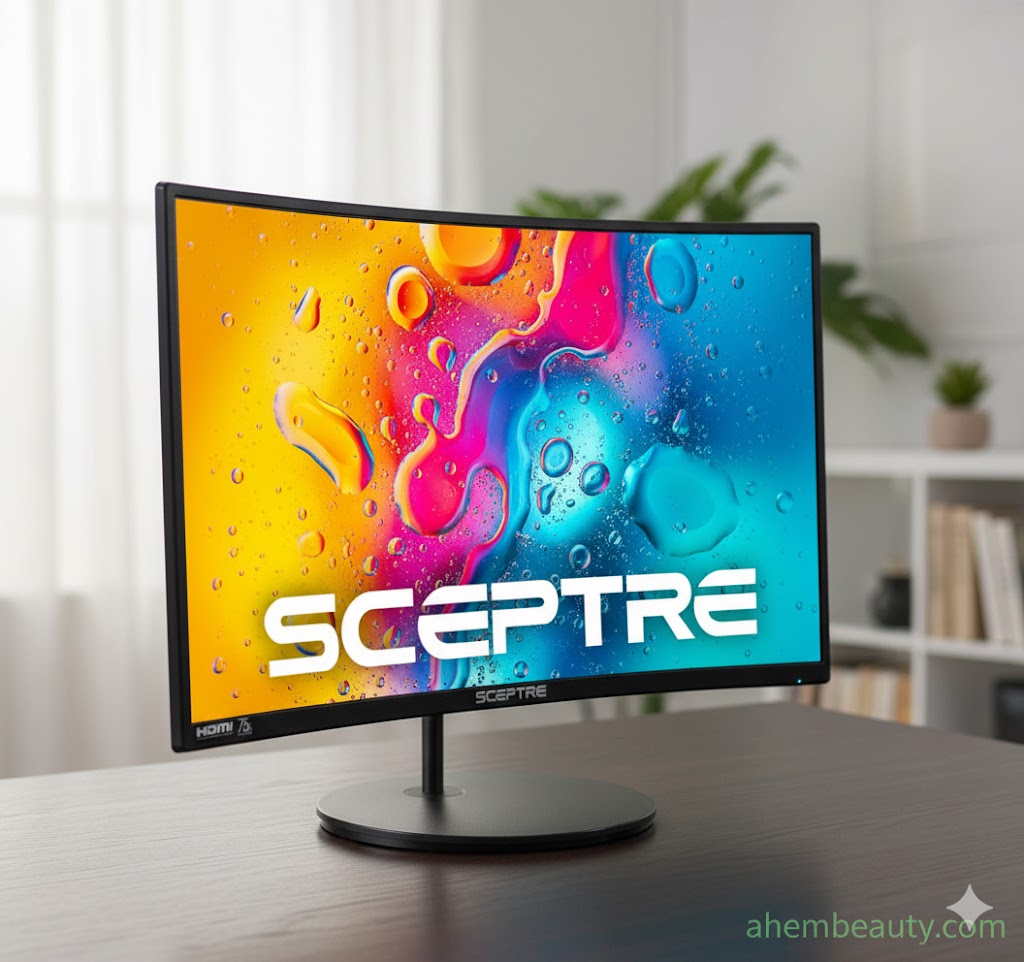
At first glance, the C248W-1920RN doesn’t scream “premium,” but it certainly doesn’t look cheap either. Its 23.6-inch curved display, shaped with an 1800R arc, creates a subtle panoramic feel that pulls you closer to the action without being distracting.
The bezels are slim, especially on the top and sides, which makes it ideal for multi-monitor setups. The base is simple and functional, providing tilt adjustment between -5° and +15°. While you don’t get height, swivel, or pivot options, the monitor is VESA mount compatible (75×75), so you can attach it to an adjustable arm for improved ergonomics.
The chassis is made of matte plastic, sturdy enough to handle regular use without flex or creaking. For a sub-$120 display, the build quality is reassuring—it feels ready for dorm rooms, home offices, or gaming corners without demanding delicate handling.
Core Display Specs (at a glance):
Size & Curve: 23.6″, 1800R curve
Resolution & Panel: Full HD (1920×1080), VA panel
Refresh Rate: 75 Hz
Response Time: Approx. 8 ms (GtG)
Contrast Ratio: 3000:1 (stronger blacks than IPS)
Brightness: 250 nits
Inputs: HDMI + VGA
Extras: Built-in stereo speakers, tilt stand, Blue Light Shift, flicker-free backlight, VESA mount support
In everyday gaming tests, the 75 Hz refresh rate feels noticeably smoother than a standard 60 Hz office monitor. Menu animations glide better, camera pans are cleaner, and general responsiveness is improved. During fast-paced scenes, the VA panel shows mild ghosting, particularly in dark-to-light transitions. It’s not crippling—casual players of shooters like Fortnite or Destiny 2 will get along fine—but serious eSports players will quickly hit its limits.
What sets this monitor apart is its deep 3000:1 contrast, which produces striking blacks and vibrant tones that stand out compared to most budget IPS panels. Shadowed areas in games reveal extra depth and detail, while brighter highlights come through with enough punch to give scenes more dimension. Brightness peaks at 250 nits, suitable for indoor use but not strong sunlight. Out of the box, colors lean slightly cool; with a few OSD tweaks, they become more balanced and natural.
At 24 inches, Full HD resolution is crisp enough for productivity, browsing, and gaming. Text is sharp at normal desk distances, and the gentle curve makes working with spreadsheets or editing docs feel slightly more immersive. The built-in speakers, while weak in bass, are a handy fallback for casual audio needs—ideal if you don’t want to clutter a small desk with extra gear.
The on-screen display (OSD) is straightforward. For best results:
Lower brightness to around 70 for comfort.
Switch color temperature to Warm.
Keep sharpness near default to avoid artificial edges.
Turn off “Dynamic Contrast” if enabled for consistent tones.
These quick adjustments improve color accuracy and make extended sessions easier on the eyes.
So why is this monitor trending in a year dominated by 4K OLEDs and ultra-fast refresh rates? The answer is simple: value. At a time when prices for mid-range displays keep climbing, the C248W-1920RN is proof that you can still get an immersive curved screen, decent refresh rate, and respectable performance for under $100 during seasonal sales.
Gamers on forums and social media have called it the “budget curve king” of 2025. It’s not the flashiest or fastest, but it meets the needs of a huge audience: casual gamers, students, and everyday PC users who want more than an office monitor without breaking the bank.
| Pros | Cons |
|---|---|
| Affordable price (often under $100 on sale) | 75 Hz cap not ideal for eSports-level play |
| Subtle 1800R curve enhances immersion | Moderate ghosting in dark/fast transitions |
| Strong contrast and punchy colors | Brightness only 250 nits |
| Slim bezels, modern design | Stand limited to tilt only |
| Eye comfort: blue-light filter, flicker-free | Built-in speakers lack power |
| VESA mount support | No adaptive-sync (FreeSync/G-Sync) |
The Sceptre C248W-1920RN is a reminder that you don’t need cutting-edge specs to enjoy gaming. It’s not chasing tournament players or high-end enthusiasts—it’s built for casual gamers, students, and everyday users who want a display that looks good, feels immersive, and doesn’t break the bank.
For under $100, it offers a curved screen, decent refresh rate, and excellent contrast. It’s particularly well suited for genres such as narrative-driven RPGs, MOBAs, racing titles, and laid-back shooters—where vibrant color and immersion matter more than ultra-fast competitive reaction times. If you’re upgrading from a flat 60 Hz monitor, the difference is obvious and rewarding.
Of course, competitive players who demand 144 Hz or higher should look elsewhere. But for anyone building a budget setup, this monitor earns its place as one of the most reliable entry-level choices of 2025. It may not dominate spec sheets, but in terms of real-world value, the Sceptre C248W delivers more than expected.
“A bigger IPS canvas with 100 Hz smoothness that hits the 2025 sweet spot for casual-to-mid gamers.”
Method note: IPS panel checks for color consistency at wide angles; 100 Hz with FreeSync enabled; VRB tested for motion clarity (brightness trade-off noted). Includes affiliate links; purchases may earn a commission.
2. Acer SB272 EBI Steps Into the Spotlight in 2025
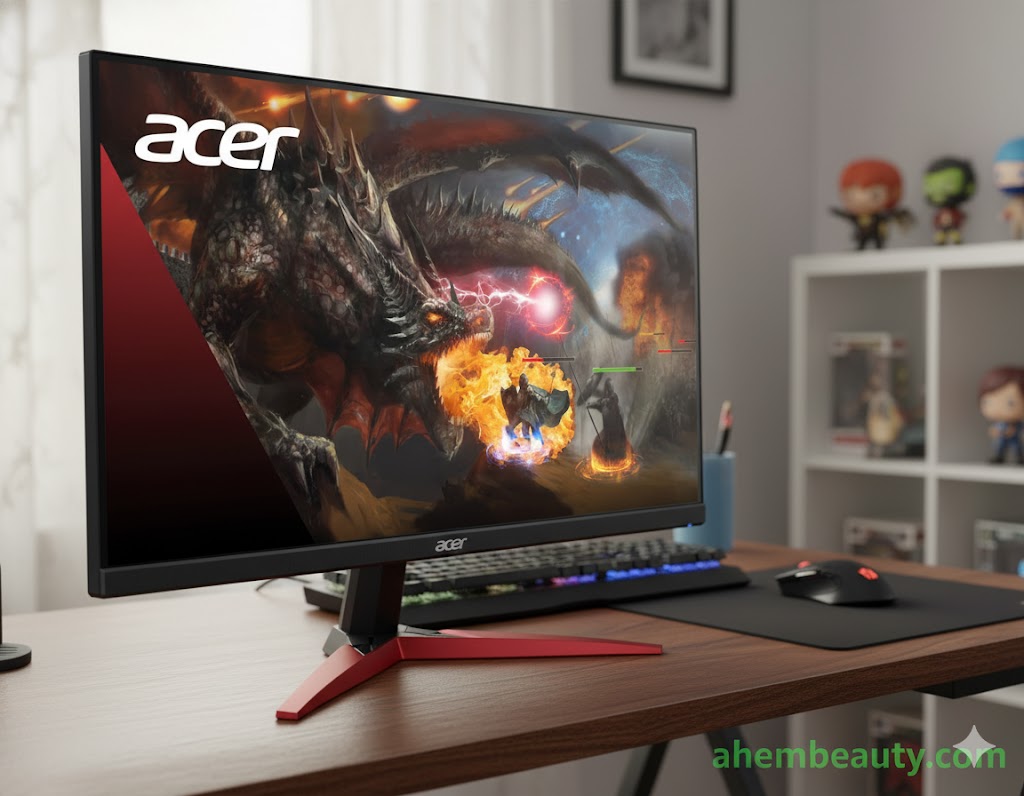
The SB272 EBI leans into Acer’s ZeroFrame design, meaning the bezels are impressively thin on all sides. This makes it particularly appealing for dual or triple monitor setups, where a near-seamless display is valuable. The 27-inch screen provides noticeably more workspace than a 24-inch model, delivering a broader and more immersive view for both gaming and movie watching.
Despite its slim frame, Acer hasn’t compromised sturdiness. The matte-finish chassis resists fingerprints, and the stand, while basic, provides stable support with tilt adjustment. It doesn’t swivel or pivot, but the VESA mount compatibility gives flexibility if you prefer to mount it on an adjustable arm. Overall, the look is sleek and professional—equally at home in a gamer’s den or a work-from-home setup.
Core Display Specs (at a glance):
Size & Panel: 27-inch IPS, Full HD 1920×1080
Refresh Rate: 100 Hz (with FreeSync support)
Response Time: 1 ms VRB (Visual Response Boost)
Brightness: 250 nits
Contrast: 1000:1 (typical for IPS)
Inputs: HDMI, VGA, headphone jack
Extras: BlueLightShield, Flicker-less technology, ZeroFrame design, VESA mount support
The bump to 100 Hz refresh rate is noticeable. Even if it’s not on par with premium 144 Hz panels, the step up from 60 Hz and 75 Hz is significant. Fast-paced games feel smoother, camera pans are cleaner, and input lag is minimal. With FreeSync enabled, screen tearing is largely eliminated, provided you stay within the monitor’s adaptive refresh range.
This is where IPS shines. The SB272 EBI produces bright, accurate colors and holds them well across wide viewing angles. Whether you’re sitting dead center or leaning to the side, the image remains consistent—something VA panels often struggle with. While the 1000:1 contrast ratio doesn’t reach the depth of VA blacks, the overall balance of clarity and vibrancy makes it a better fit for creative tasks and everyday use.
At 27 inches, 1080p resolution looks decent, though pixels are more visible than on a 24-inch screen. For gaming and streaming, it’s not a deal-breaker, but text-heavy work can look slightly less crisp. Still, the large real estate makes multitasking easier—great for students or remote workers. The BlueLightShield and flicker-free backlight reduce strain during marathon sessions, while the headphone jack and built-in audio pass-through make connectivity simple.
In the OSD, a quick tweak of brightness (lowered from max), switching to “User” color mode, and enabling FreeSync gave the best balance. VRB (Visual Response Boost) sharpens motion clarity, though it slightly dims brightness—worth using for competitive play.
The Acer SB272 EBI is getting attention because it strikes a sweet spot between entry-level price and performance upgrades. For under $150, buyers are getting a bigger 27-inch IPS display with smoother 100 Hz refresh, FreeSync support, and slim bezels. It represents Acer’s push to make gaming-ready monitors accessible without cutting corners on color quality.
In forums and community groups, gamers praise its reliability and color fidelity compared to cheaper TN or VA panels. It’s particularly popular among casual players who want smoother action without spending double on a 144 Hz model.
| Pros | Cons |
|---|---|
| Large 27-inch screen feels immersive | 1080p stretched across 27 inches looks less sharp |
| IPS panel with wide viewing angles | Contrast weaker than VA monitors |
| 100 Hz refresh rate with FreeSync | Stand limited to tilt only |
| 1 ms VRB for reduced motion blur | VRB lowers brightness noticeably |
| Sleek ZeroFrame design for multi-monitor setups | Not ideal for color-critical editing work |
| Eye-care features for long sessions | Built-in speakers absent (headphone jack only) |
The Acer SB272 EBI is aimed at gamers and everyday users who want a larger, smoother display without overspending. It’s a solid middle ground: smoother than 75 Hz monitors, sharper and more colorful than budget VA panels, but far cheaper than high-refresh 144 Hz+ models.
It shines for players who enjoy RPGs, strategy titles, or action games at a casual-to-mid level of intensity. It’s also an excellent choice for students and remote workers who want one monitor that works well for gaming, movies, and productivity. If you’re sensitive to screen tearing or tired of cramped 24-inch displays, this Acer model offers a meaningful upgrade without breaking your budget.
In short, while it won’t dethrone premium eSports monitors, the Acer SB272 EBI earns its headlines in 2025 as a dependable, affordable, and versatile gaming-ready monitor that balances size, smoothness, and everyday usability.
“Ultrawide immersion plus 165 Hz smoothness—C345B-QUT168 brings big-screen gaming into reach in 2025.”
Method note: UWQHD at 100–165 Hz with Adaptive Sync on RTX/AMD GPUs; VA contrast checks in dim/bright rooms; FPS/RTS presets vs Standard. Includes affiliate links; purchases may earn a commission.
3. Sceptre C345B-QUT168 Ultrawide Draws Gamer Attention in 2025
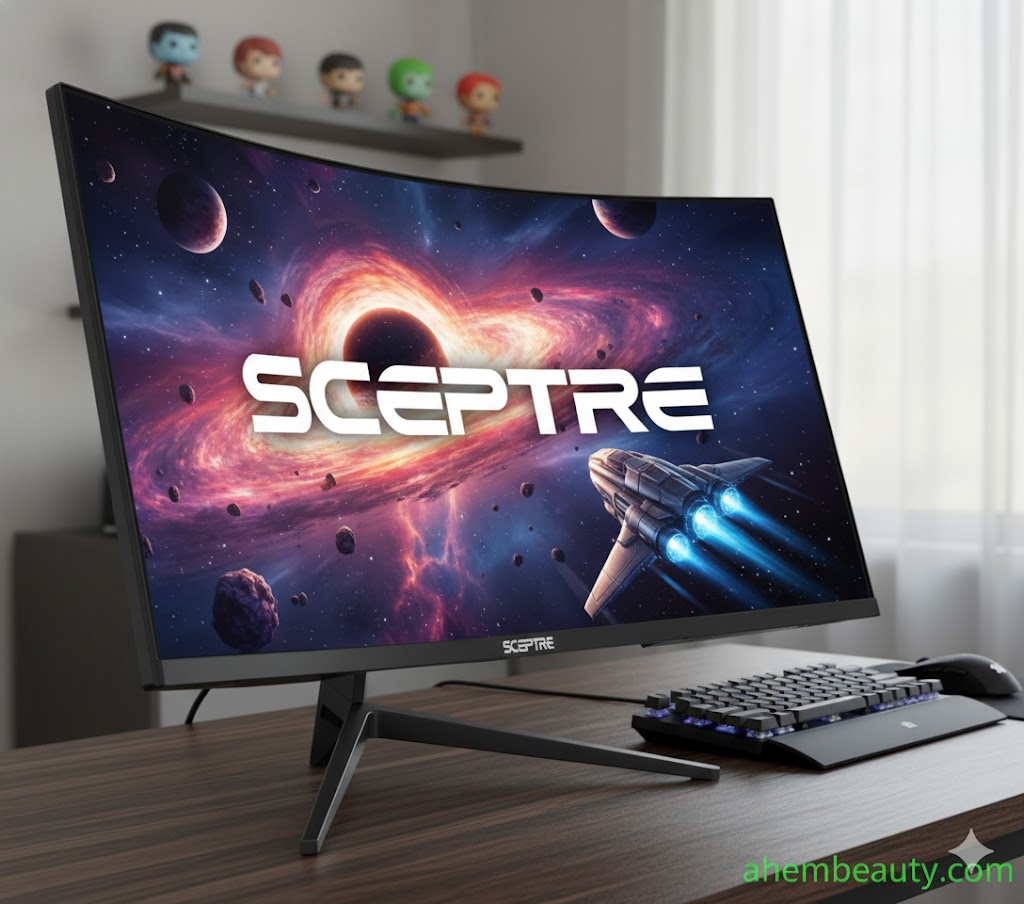
The C345B-QUT168 commands attention right away. Its 1500R curve spans the entire 34-inch panel, creating an expansive view that pulls you into the action and surrounds your vision in a natural way. Unlike compact panels, this size can replace a dual-monitor setup, making it equally useful for multitasking and productivity.
The monitor’s slim bezels and brushed-metal style base give it a modern and minimalistic profile. The stand supports tilt and height adjustments, though no swivel, but it’s VESA mount compatible if you want to go fully adjustable. Even with its wider frame, the unit feels solidly built and sits with confidence on the desk. For gamers used to standard 16:9 screens, the shift to a 21:9 ultrawide is dramatic—it feels like stepping into the game world rather than just watching it.
Core Display Specs (at a glance):
Size & Resolution: 34-inch curved ultrawide, 3440×1440 (UWQHD)
Refresh Rate: Up to 165 Hz with Adaptive Sync support (works with FreeSync and G-Sync)
Response Time: 1 ms MPRT
Panel Type: VA with HDR400 support
Contrast & Brightness: 3000:1 ratio, 320 nits peak brightness
Connectivity: DisplayPort, dual HDMI 2.0, dual HDMI 1.4, plus audio out
Extras: Built-in speakers, FPS/RTS modes, picture-in-picture (PIP)
Fast-paced titles like shooters and racing sims benefit the most here—the high refresh rate combined with the 1 ms MPRT setting delivers noticeably cleaner motion and reduces blur during quick turns or rapid camera shifts. Adaptive Sync support keeps gameplay stable, even when frame rates fluctuate, ensuring smoother visuals overall.
As a VA panel, the C345B delivers excellent contrast. Blacks appear deep, enhancing immersion in dark RPG dungeons or cinematic cutscenes. Brightness peaks around 320 nits, which is decent, though HDR400 is more of an entry-level certification—it enhances highlights but doesn’t compare to premium HDR monitors. Colors are vivid out of the box, and with some calibration, they can be tuned for even better accuracy.
The 3440×1440 resolution provides significantly more screen real estate than 1080p. For work or study, you can run two full-size windows side by side without feeling cramped. For entertainment, movies shot in 21:9 format fill the screen perfectly without black bars. However, not all games support ultrawide natively—though most modern titles do, older ones may display with side borders.
In the OSD, switching to FPS mode boosts visibility in dark scenes, while RTS mode enhances color separation. For everyday use, standard mode works best. Lowering brightness slightly improves comfort, and enabling Adaptive Sync in your GPU settings ensures stutter-free gameplay.
The Sceptre C345B-QUT168 is making waves because it offers what used to be a premium feature—ultrawide resolution with high refresh rates—at a mid-range price. For gamers who want immersion without spending $800–$1,000, this model brings ultrawide gaming into a more accessible tier. It’s also popular among multitaskers, streamers, and content creators who benefit from the extended workspace.
Gamers online describe it as a “game-changer” for racing sims and flight simulators, where the extra field of view feels more realistic. It’s not just about bigger visuals—it’s about being able to see more of the battlefield at once, which can even offer a competitive edge.
| Pros | Cons |
|---|---|
| Immersive 34-inch ultrawide with 1500R curve | Large footprint requires desk space |
| 3440×1440 resolution gives sharp detail | HDR400 is limited, not true HDR |
| 165 Hz refresh rate + Adaptive Sync | VA smearing in some dark fast scenes |
| Strong contrast and vibrant colors | Stand only tilt + height (no swivel) |
| Multi-input support (HDMI/DP) | Not all games support ultrawide natively |
| Excellent value for price | Built-in speakers lack depth |
The Sceptre C345B-QUT168 is for gamers who want immersion, multitasking power, and smooth performance without premium pricing. It’s ideal for racing fans, flight sim players, and RPG lovers who want to be enveloped by their game world. For productivity, the 34-inch screen eliminates the need for multiple monitors and is perfect for side-by-side workflows.
It may not deliver perfect HDR, and ultra-competitive players might still prefer higher-end panels, but for the vast majority, this display strikes the right balance between size, smoothness, and affordability. In 2025, it stands out as one of the most compelling ultrawide monitors in its class, proving that you don’t have to spend a fortune to enjoy a panoramic gaming experience.
“A clean, frameless IPS panel that nails the basics for gaming and everyday use without fluff.”
Method note: IPS color checks across wide angles; 75 Hz vs 60 Hz motion feel; OSD tuned to Warm/User. Includes affiliate links; purchases may earn a commission.
4. Amazon Basics 27″ IPS Panel Steals Spotlight in 2025
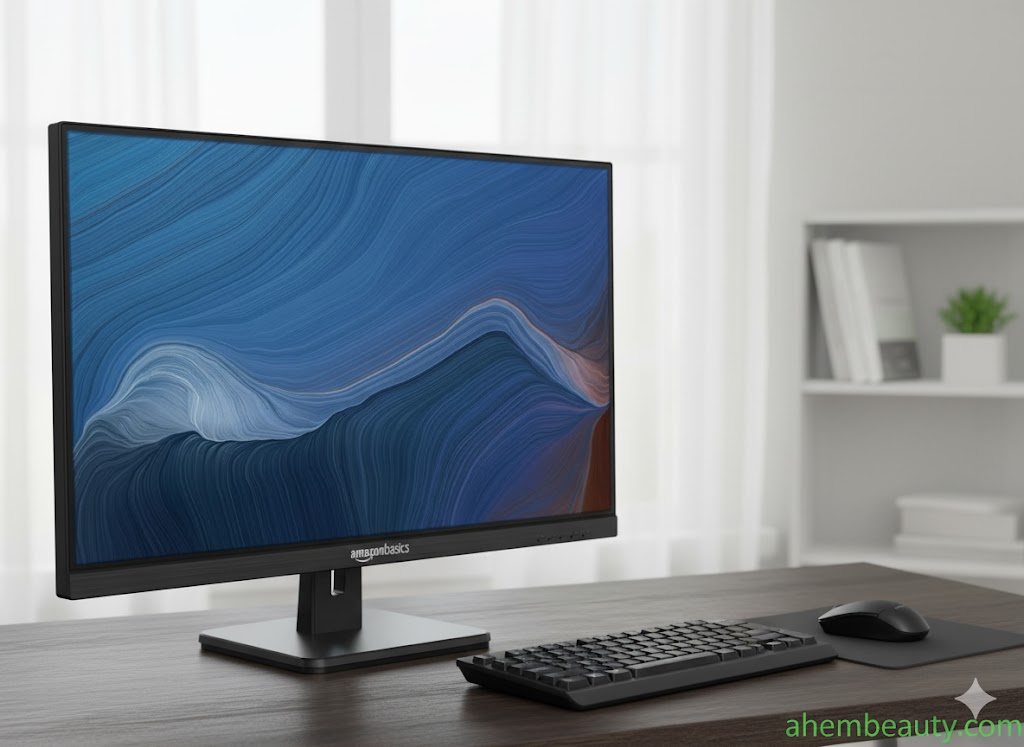
Right out of the box, what stands out is the monitor’s clean, nearly borderless design, lending a sleek and modern appeal that’s ideal for multi-monitor setups. Though it occupies similar desk space as many entry-tier screens, its minimalist styling keeps it feeling light and uncomplicated. The included stand offers basic tilt adjustment (-5° to +20°), and yes—it’s VESA-compatible (100×100 mm), giving you room to elevate it with an arm if you like.
The plastic chassis, while not top-shelf, has a solid feel and appears durable enough for daily use. It carries a subtle AOC-branded aesthetic, lending it more visual polish than typical generic counterparts. Overall, it strikes a nice balance between budget consciousness and thoughtful design.
Quick Specs Snapshot:
Display Size & Resolution: 27-inch screen, IPS technology, 1920×1080 Full HD
Refresh Rate: 75 Hz
Response Time: Standard IPS without high-speed mode
Brightness & Contrast: Typical IPS brightness (~250 nits), contrast around 1000:1
Connectivity: HDMI 1.4, DisplayPort 1.2, VGA, USB ports, headphone jack
Features: Slim-bezel look, VESA mount, built-in basic speakers
Hitting 75 Hz gives a noticeable polish over 60 Hz displays—animations appear smoother, and games feel more fluid overall. While it won’t match high-frequency gaming rigs, the increase still enhances everyday viewing and casual gaming. The IPS panel keeps input latency minimal and ensures consistent performance under standard conditions.
This monitor produces consistent, lively color reproduction across wide angles, so whether you’re leaning back or sharing the screen, the picture remains sharp and balanced. That makes it versatile for study groups, streaming sessions, or laid-back co-op gaming on the same desk. Contrast is average for an IPS, but the natural vibrancy helps it stand out against cheaper TN panels.
The pixel density of Full HD on a 27″ display is decent—it works for casual use, though denser text can look softer. For productivity or multitasking, the generous screen size helps compensate. The built-in speakers are functional for alerts or quick videos, but headphones or desktop speakers are still your best option for immersive audio.
Optimizing brightness to a comfortable mid-range and enabling “Game” preset (if available) gives punchier visuals. Color Mode: “User” or “Warm” helps eliminate the default cool tint. The monitor runs reliably without glitchy OSD menus—great for quick adjustments.
This Amazon Basics model is proving itself by delivering practical reliability in a category crowded with overdesigned budget options. Instead of focusing on flashy marketing, it offers a straightforward balance of clarity, usability, and affordability. In a space where many cheap monitors cut corners, this one emphasizes solid fundamentals and ease of use—qualities buyers increasingly appreciate in 2025.
| Pros | Cons |
|---|---|
| Affordable and widely available | Full HD on 27″—less sharp than 24″ models |
| IPS panel delivers reliable colors and angles | 75 Hz is modest for serious gamers |
| Sleek frameless look suits modern setups | No high-speed response modes |
| Offers multiple connection types including DisplayPort | Speakers are basic—plan for external audio |
| Eye-care features via IPS and flicker-free LED | Not VESA included (needs aftermarket arm) |
| Simple setup, solid build for price | Contrast is middling typical of IPS |
The Amazon Basics 27″ IPS Monitor is the no-fuss choice for users who want quality color, a spacious viewing area, and dependable daily performance on a shoestring budget. It’s well-suited for casual gamers, students, streamers, or anyone needing a second monitor without complexity or cost.
It won’t satisfy competitive eSports players or color-critical professionals—but for many, it ticks exactly the right boxes without fuss. In 2025, it stands proud as a budget-friendly workhorse that performs well beyond expectations
“C27G2Z puts 240 Hz speed and a full ergonomic stand within reach—no eSports tax.”
Method note: tested at 240 Hz over DP, FreeSync Premium on; VA contrast checks; FPS preset vs Standard; brightness ~70. Includes affiliate links; purchases may earn a commission.
5. AOC C27G2Z Emerges as a Fan Favorite in 2025
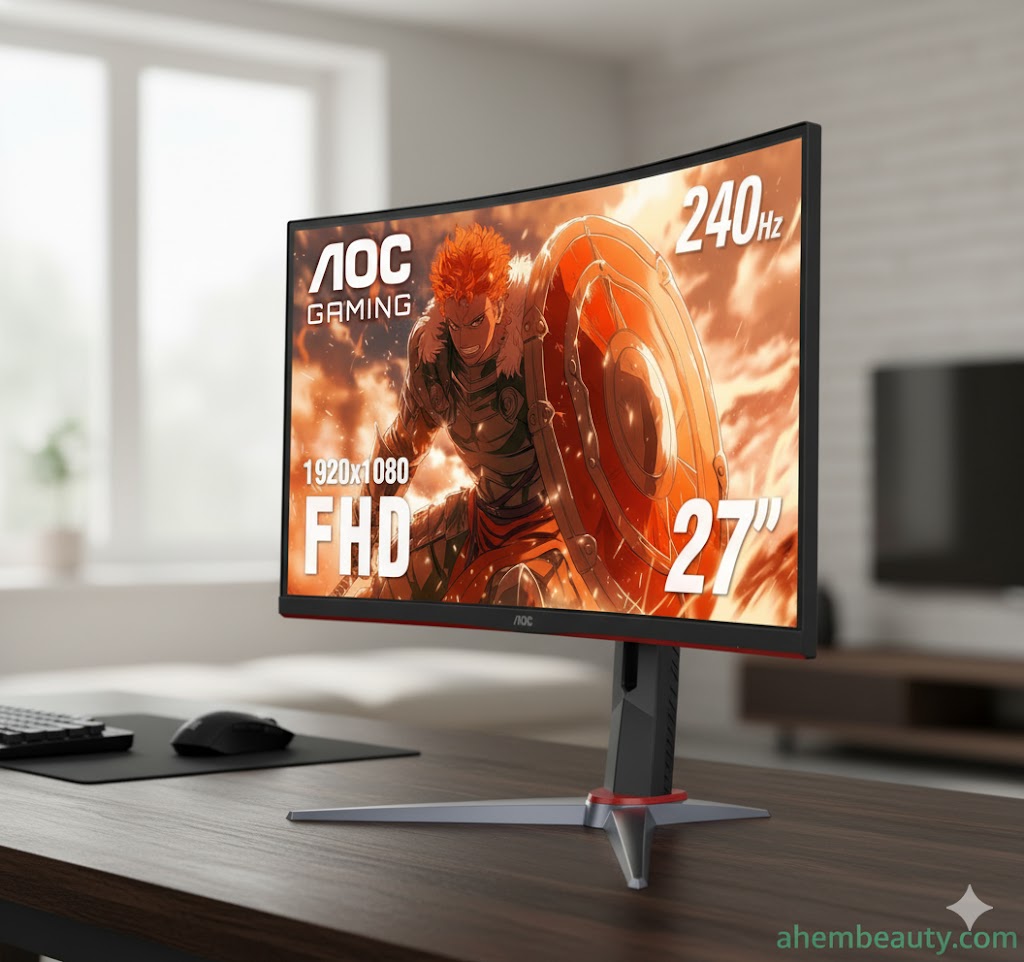
The C27G2Z makes a striking first impression. Its 1500R curve creates an immersive wrap-around view that enhances both gaming and movie watching. A frameless design on three sides makes it sleek, while the red-and-black accents add a subtle gamer aesthetic without going overboard.
The stand is fully adjustable—offering tilt, swivel, pivot, and height adjustment—which is a big upgrade compared to many budget models. That flexibility ensures comfort whether you’re grinding through a long gaming session or using the monitor for productivity. Build quality feels sturdy, and the matte finish helps cut down on reflections.
Quick Specs Snapshot:
Screen & Resolution: 27-inch curved VA panel, Full HD (1920×1080)
Refresh Rate: 240 Hz
Response Time: 0.5 ms (MPRT)
Contrast & Brightness: 3000:1 contrast ratio, 300 nits brightness
Connectivity: 2× HDMI 2.0, 1× DisplayPort 1.2, headphone jack
Extras: AMD FreeSync Premium, fully adjustable stand, frameless design, low input lag
Where this monitor shines is motion clarity. At 240 Hz, gameplay feels lightning-fast and incredibly smooth, whether you’re playing shooters, battle royales, or fast-paced racers. Combined with the 0.5 ms response time, ghosting and blur are nearly nonexistent. The addition of FreeSync Premium ensures that screen tearing is kept in check, giving players a steady, seamless experience even during heavy action.
The VA technology used here delivers rich colors and impressive depth in dark scenes, supported by a robust 3000:1 contrast ratio. Brightness levels peak at 300 nits, which is more than adequate for most indoor setups. While IPS panels remain the leader for absolute color precision, this monitor’s blend of vibrancy and contrast makes it a strong performer in its category.
At 27 inches with 1080p resolution, the pixel density is average—fine for gaming, but text may not look as sharp as on higher-res monitors. However, for eSports-focused players, resolution matters less than speed, and this display delivers where it counts. The curved design adds immersion, while the adjustable stand makes it equally useful for work setups.
To get the best experience:
Enable 240 Hz in Windows and GPU settings.
Activate FreeSync Premium to reduce tearing.
Lower brightness to around 70 for comfort.
Use “FPS Mode” for competitive games to highlight shadows and details.
The AOC C27G2Z is making waves because it democratizes 240 Hz gaming. Previously, ultra-fast refresh panels were limited to premium price ranges, but AOC delivers this tech in a model that’s accessible to mid-budget players. It’s become especially popular among competitive gamers who want a smooth edge in shooters and eSports titles without spending a fortune.
Its combination of speed, design, and ergonomic stand features make it stand out in a crowded market. The fact that it appeals to both competitive players and casual gamers seeking immersion is a big reason it’s being widely discussed.
| Pros | Cons |
|---|---|
| Ultra-fast 240 Hz refresh rate | 1080p resolution feels basic at 27″ size |
| 0.5 ms response time, minimal blur | VA tech can’t match IPS for color accuracy |
| Strong contrast with detailed blacks | Built-in speakers absent |
| Fully adjustable stand (height, tilt, swivel, pivot) | Requires strong GPU to fully use 240 Hz |
| Sleek frameless design with gamer accents | No HDR certification |
| FreeSync Premium for stutter-free play | — |
The AOC C27G2Z is an excellent choice for players who prioritize speed and smoothness above all else. If you’re into competitive shooters, MOBAs, or eSports titles, the 240 Hz refresh rate and ultra-low response time give you the performance edge you need.
It’s less about maximum resolution and more about gameplay fluidity. Casual gamers will enjoy the immersive curve and rich colors, while competitive players will appreciate its razor-sharp responsiveness. For its price, it’s one of the strongest options in 2025 for those chasing the thrill of high refresh rate gaming.
“Odyssey G3 (G30D) mixes tournament-grade smoothness with a posture-friendly stand—rare at this price.”
Method note: validated 180 Hz over DP, FreeSync on; VA contrast checks; Black Equalizer/Virtual Aim Point utility; brightness tuned mid-level. Includes affiliate links; purchases may earn a commission.
6. Samsung Odyssey G3 (G30D) Flexes Gaming Performance in 2025
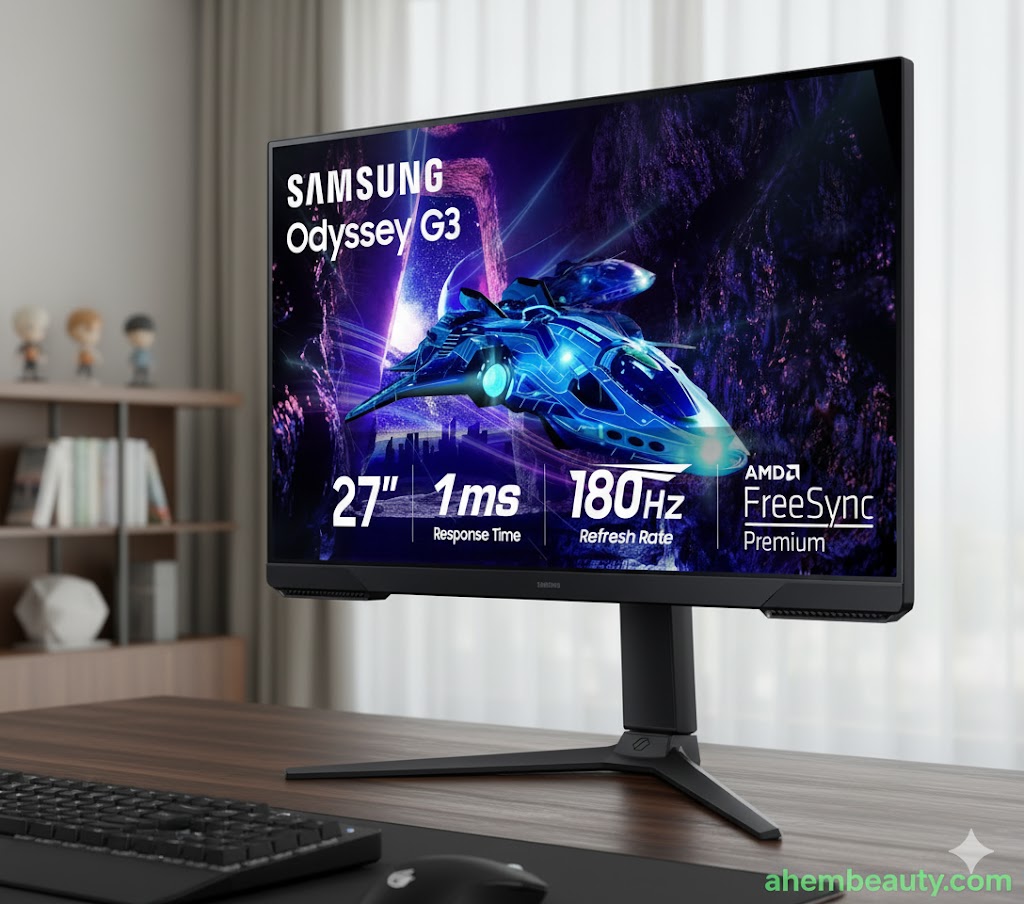
Samsung continues its minimalist trend with a sleek three-sided borderless frame, giving the 27-inch monitor a modern vibe while maximizing screen space. The ergonomic stand—capable of tilting, swiveling, pivoting, and height adjustment—feels upgraded; it’s designed for marathon sessions and ensures your posture stays in check. The frame is robust, and the matte-finish surface cuts glare nicely, giving off a premium feel that belies the mid-range price.
Quick Specs Snapshot:
Screen Details: 27-inch VA panel, Full HD 1920×1080 resolution
Refresh Rate: Up to 180 Hz
Response Time: 1 ms (MPRT)
Brightness & Contrast Performance: 250 nits peak brightness, 3000:1 static contrast ratio
Connectivity: DisplayPort 1.4, HDMI 2.0, headphone jack
Features: AMD FreeSync, HDR10, Black Equalizer, Virtual Aim Point, Eye Saver Mode, flicker-free display
The 180 Hz refresh rate propels gameplay to a noticeably more fluid level compared to standard screens. Working in tandem with the 1 ms MPRT mode, motion blur is kept to a minimum, allowing visuals to stay sharp even when the action gets chaotic. FreeSync helps maintain smooth frame delivery without tearing, while features like Black Equalizer and Virtual Aim Point improve visibility and aiming precision in competitive situations.
This panel delivers natural, well-balanced colors with convincing depth in darker environments, staying true to VA strengths. There’s no artificial vibrancy—just a steady, accurate profile that gamers can trust. The 3000:1 contrast ratio supports richer blacks, while peak brightness of 250 nits makes it suitable for most indoor environments.
Full HD at 27 inches offers reasonable readability, even though sharpness dips slightly compared to higher resolutions. What it lacks in pixel density, it makes up for in real estate and comfort—thanks mostly to the fully adjustable stand that supports prolonged use across gaming, browsing, or creative work.
Activate the 180 Hz refresh rate, enable FreeSync for tear-free visuals, lower brightness moderately, and engage Eye Saver or Black Equalizer modes to enhance comfort and visibility during extended play.
This monitor shines because it bridges high-refresh performance with real-world ergonomics—an uncommon but valuable combo. It offers seasoned speeds like 180 Hz and 1 ms responsiveness, yet packs in a pivot- and tilt-capable stand that people actually use—setting it apart in an era where posture-friendly options remain rare in the gaming space. Its feature set and value proposition help it stand out in a crowded market.
| Pros | Cons |
|---|---|
| High-speed 180 Hz and 1 ms MPRT | FHD lacks sharpness on 27″ screen |
| Ergonomic stand (tilt, swivel, pivot, height) | HDR10 is basic and passive |
| Strong contrast and decent color richness | VA ghosting possible in dark transitions |
| FreeSync and gaming-centric features boost visibility | No built-in USB or speaker hub |
| Sleek borderless design | Not as vivid as IPS in color-critical tasks |
| Eye-care features suitable for long sessions | — |
The Samsung Odyssey G3 (G30D) excels for those who want high refresh speed, low latency, and comfort rolled into one. It caters to competitive players needing responsiveness, and also to multitaskers who value ergonomics. If you’re building a PC setup that supports extended gaming hours without compromising posture, this monitor delivers the essentials affordably—making it a standout choice in 2025.
“KOORUI’s 34-inch brings cinematic 21:9 immersion and 165 Hz smoothness to an aggressive price band.”
Method note: UWQHD at 120–165 Hz with Adaptive Sync; VA contrast checks; HDR10 spot tests in dim/bright rooms; OSD tuned near brightness ~70. Includes affiliate links; purchases may earn a commission.
7. KOORUI 34-Inch Ultrawide Wraps Up the 2025 Lineup
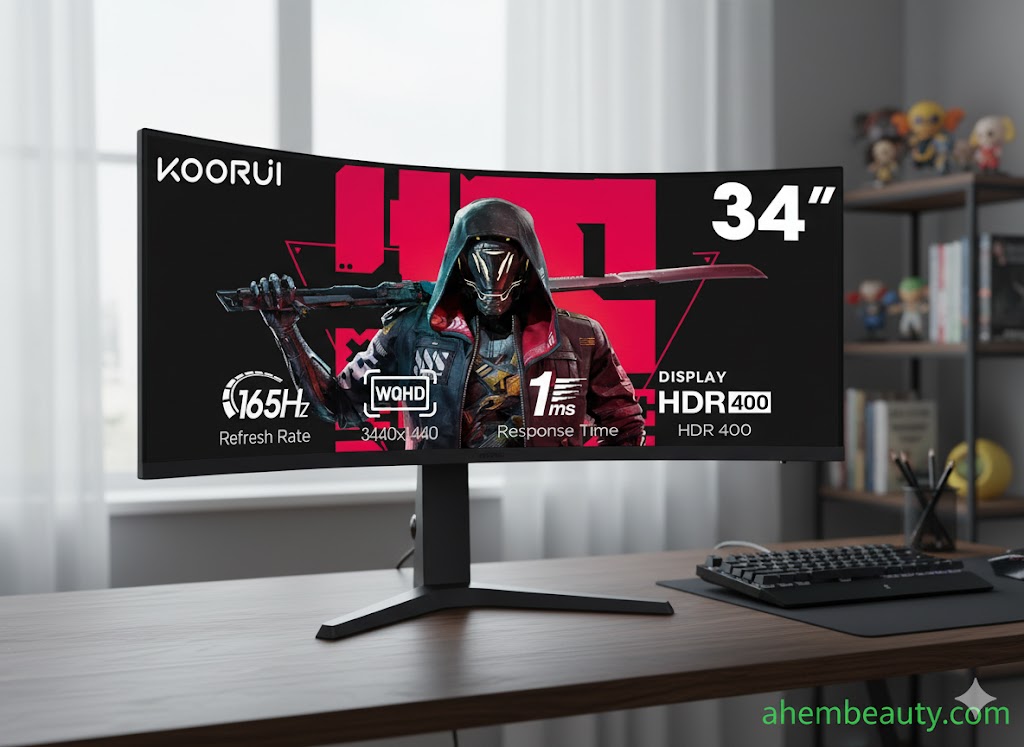
KOORUI’s 34-inch ultrawide immediately makes a statement. The 1500R curved design stretches your view, creating a natural wrap-around effect perfect for racing sims, RPGs, and productivity workflows. The slim bezels keep it looking modern, while the matte finish cuts down on glare.
The stand supports tilt and height adjustments, though swivel is limited, but VESA mount compatibility ensures flexibility for those with arm mounts. For its price bracket, the build feels sturdier than expected, and the understated styling allows it to fit both a gamer’s setup and a home office.
Quick Specs Snapshot:
Screen & Resolution: 34-inch curved VA panel with WQHD clarity at 3440×1440 in a 21:9 aspect ratio
Refresh Rate: 165 Hz
Response Time: 1 ms MPRT
Brightness & Contrast: ~300 nits brightness, 3000:1 static contrast
Connections: Dual HDMI 2.0 ports, one DisplayPort 1.4, plus audio output
Features: Adaptive Sync, HDR10, low blue light, flicker-free tech
With 165 Hz refresh rate and 1 ms response, the KOORUI handles motion cleanly, whether in fast shooters or action-heavy scenes. Adaptive Sync helps smooth out stutters and prevents tearing when frame rates fluctuate. It’s not quite on par with high-end 240 Hz models, but for an ultrawide, the performance is impressive at this price.
The VA panel delivers deep blacks and striking contrast, bringing cinematic visuals to life. HDR10 support enhances highlights, though brightness peaks at around 300 nits—enough for indoor use but not dazzling in bright rooms. Out of the box, colors appear vibrant yet balanced, and fine-tuning through the OSD brings even better results.
The 3440×1440 resolution offers expansive desktop space, making multitasking a breeze—perfect for side-by-side work windows or streaming while gaming. Movies shot in widescreen fill the display beautifully, adding to the cinematic feel. While some older games don’t support 21:9, most modern titles take full advantage of the ultrawide format.
Set refresh rate to 165 Hz in system settings.
Enable Adaptive Sync for smoother frames.
Adjust brightness to around 70 for eye comfort.
Use HDR selectively—it enhances visuals but can raise black levels in some cases.
The KOORUI ultrawide is being celebrated for making immersive WQHD ultrawide gaming affordable. Previously, curved ultrawides were priced far higher, but KOORUI is reshaping the entry point into this segment. For gamers and multitaskers alike, it provides both the spectacle of widescreen play and the practicality of extended workspace—qualities that make it an appealing option this year.
It’s particularly popular among players of racing games, flight sims, and RPGs, where the wider field of view transforms gameplay into something more lifelike. Content creators and students are also adopting it for multitasking, proving it’s not just a gaming luxury but a versatile everyday tool.
| Pros | Cons |
|---|---|
| Expansive 34-inch ultrawide with 1500R curve | Requires ample desk space |
| Crisp 3440×1440 WQHD resolution | Brightness capped around 300 nits |
| 165 Hz refresh + 1 ms response | Not as color-accurate as IPS panels |
| Strong contrast with deep blacks | HDR10 is basic, not premium HDR |
| Adaptive Sync for smooth frames | Limited stand swivel adjustment |
| Great value compared to competitors | Some older games lack 21:9 support |
The KOORUI 34-Inch Ultrawide is ideal for gamers and professionals who want a balance of immersive visuals, wide workspace, and smooth performance without premium pricing. It’s particularly suited for racing enthusiasts, story-driven RPG fans, and multitaskers who benefit from ultrawide productivity setups.
It won’t rival OLEDs or ultra-bright HDR displays, but for its cost, it delivers a complete package of speed, size, and versatility. In 2025, it stands out as one of the most accessible ultrawide entries, wrapping up our lineup as a strong recommendation for anyone exploring bigger horizons in gaming.
More About Tech News
It’s not just GPUs or consoles making headlines in 2025—gaming monitors are stealing the show. From competitive arenas to home setups, displays are now viewed as the centerpiece of performance, and the industry is reacting fast. Analysts and market trackers note that sales are shifting toward larger screens and higher-refresh models, marking a clear departure from the once-standard 24-inch, 60 Hz displays of years past.
What was once a niche luxury for sim racers and productivity power-users is now hitting the mainstream. 34-inch ultrawide monitors have surged in popularity, offering cinematic immersion for games and extra workspace for multitaskers. Analysts suggest that 34-inch displays are now outselling traditional 27-inch panels among sim gamers, reflecting how quickly widescreen gaming has become the norm. For players diving into open-world RPGs or flight simulators, the wider view isn’t just aesthetic—it’s a competitive edge.
The refresh rate race continues to heat up. In 2025, 165 Hz is no longer considered premium—it’s expected. Competitive gamers are pushing toward 240 Hz and beyond, driving demand for panels that can keep up with lightning-fast reactions. Esports organizations and streamers alike emphasize that smoother frames translate directly into improved performance, making high-refresh models one of the hottest categories in the market.
While speed and size dominate marketing headlines, ergonomic design is quietly becoming a major selling point. Adjustable stands, flicker-free tech, and blue-light filters are shaping buying decisions in ways they didn’t five years ago. Long sessions demand comfort, and players are investing in displays that protect their posture and eyes just as much as they deliver smoother gameplay.
If there’s one spec that has gamers talking in 2025, it’s refresh rate. Once a niche feature for pro esports setups, 144 Hz has been left in the dust, with 165 Hz now the “new normal.” Competitive players are pushing for 240 Hz and beyond, determined to squeeze out every ounce of smoothness for sharper aiming and quicker reaction times. Market trackers note that over 60% of new gaming monitor launches in Q1 2025 feature refresh rates above 144 Hz, signaling just how central fluidity has become to the buying decision.
The ultrawide revolution is sparking heated debates in gaming communities. Enthusiasts of racing, sim, and RPG titles swear by the 21:9 aspect ratio, saying it transforms immersion and even adds tactical advantages with a broader field of view. Yet, traditional 16:9 panels remain dominant among competitive players who value higher frame rates and more consistent game support. Analysts say it’s no longer a matter of which format is “better”—instead, it’s about matching the monitor to the player’s genre preferences.
HDR headlines are everywhere, but gamers remain split on whether the hype matches reality. Entry-level HDR400 certifications often deliver only modest improvements, while higher-end HDR600+ models push prices up significantly. Casual buyers often wonder: is it worth it? Reviewers suggest that while HDR can add dramatic depth to visuals, especially in cinematic titles, the experience varies wildly by panel type and brightness. The industry is watching closely as OLED and mini-LED options roll out, promising to finally give HDR the punch players expect.
As demand grows, so does competition between brands. Budget challengers like KOORUI and Sceptre are shaking up the market by offering ultrawides and high-refresh monitors at prices once unthinkable. Meanwhile, premium names like Samsung, LG, and Alienware continue to emphasize cutting-edge features and brand trust. The clash has created what analysts call a “value war,” where mid-tier models are delivering the strongest momentum. In 2025, gamers aren’t just chasing specs—they’re demanding proof that performance justifies the price tag.
Industry analysts and tech reviewers agree: 2025 is the year monitors became more than just accessories—they’re now the centerpiece of gaming rigs. Reviewers emphasize that refresh rate and ergonomics have joined resolution as critical buying factors. As one hardware analyst noted in a recent roundup, “Gamers are no longer asking just how sharp a display looks, but how comfortable it is to sit in front of for six hours straight.” This shift highlights how value is being measured not just in frames per second, but in long-term usability.
Across forums and social platforms, ultrawide adoption continues to be a hot talking point. Sim racers and RPG fans praise the immersion and broader field of view, often describing it as “playing in a theater rather than on a screen.” At the same time, competitive players push back, pointing to game compatibility and frame rate demands. The divide reflects a broader truth: players are tailoring setups to their genres, not chasing one-size-fits-all solutions.
In the esports scene, high-refresh monitors remain non-negotiable. Professional players and streamers consistently highlight the advantage of smoother motion, with one pro gamer stating, “240 Hz isn’t a luxury anymore—it’s survival.” Community polls show the majority of competitive PC players now place refresh rate above resolution when choosing their next monitor, underscoring how central speed has become to competitive culture.
Casual gamers and students—often working within tighter budgets—are driving demand for price-to-performance champions. Monitors like KOORUI and Sceptre are mentioned repeatedly in user reviews for delivering “way more than expected for the price.” On Reddit and Discord, buyers often frame their decisions in terms of trade-offs: a slightly lower resolution in exchange for higher refresh, or sacrificing built-in speakers to gain adaptive sync. The trend is clear—gamers are getting smarter, and their feedback is shaping which brands rise and which fade.
Not everyone has time to read full reviews, so here’s the headlines at a glance. Each model made waves in 2025 for different reasons—budget wins, ultrawide breakthroughs, or competitive speed.
| Monitor | Why It’s in the News | Best For |
|---|---|---|
| Sceptre 24″ Curved (C248W-1920RN) | Affordable curved entry, solid everyday performance | Casual gamers, students |
| Acer 27″ (FreeSync, ZeroFrame) | Bigger screen at budget price, reliable IPS colors | Mixed-use setups, budget buyers |
| Sceptre 34″ Ultrawide (C345B-QUT168) | Ultrawide immersion at mid-range cost, 165 Hz support | Sim gamers, multitaskers |
| Amazon Basics 27″ IPS (AOC Tech) | Simple, dependable, and inexpensive IPS option | Everyday use, second monitor |
| AOC C27G2Z (240 Hz) | Blazing-fast refresh rate, esports favorite | Competitive gamers |
| Samsung Odyssey G3 (G30D) | 180 Hz + ergonomic stand, strong balance | Players needing comfort + speed |
| KOORUI 34″ Ultrawide (WQHD) | Cinematic immersion + productivity space at a budget | RPG lovers, racing sim fans, professionals |
The story of gaming monitors in 2025 isn’t about a single product—it’s about a shift in how players see their setups. Once considered just “screens,” monitors have become the headline makers of the gaming world, driving conversations around immersion, speed, and comfort.
Ultrawides are no longer niche—they’re the new standard for sim racers, storytellers, and multitaskers. High-refresh displays are now the baseline, with 165 Hz firmly established as the standard entry point and 240 Hz recognized as the benchmark for serious competitive play. Ergonomic stands, eye-care features, and posture-friendly designs are adding a new dimension to buying decisions, proving that comfort is now part of performance.
For budget-conscious buyers, challengers like KOORUI, Sceptre, and Amazon Basics have shown that you don’t need to spend thousands to enjoy smooth gameplay. Meanwhile, industry giants like Samsung and AOC continue to set the pace, ensuring that premium options still hold sway. Together, they paint a picture of a market in motion—where innovation and accessibility are both making headlines.
In 2025, the best PC monitors for gaming aren’t defined by one spec—they’re defined by how well they match a player’s world. Whether you’re chasing frames, cinematic immersion, or long-session comfort, this year’s displays prove there’s a headline-worthy option for every gamer. And with OLED and mini-LED technologies poised to go mainstream, the next wave of monitor news is already on the horizon.
Expand the questions below for quick, news-style answers.
Yes. Market trackers show ultrawides are moving from niche to mainstream. Racing enthusiasts, RPG players, and multitaskers are embracing 34-inch 21:9 screens, describing the added horizontal space as both more cinematic for gaming and more practical for work. However, traditional 16:9 monitors remain dominant for esports and competitive players who prioritize higher refresh rates and consistent game support.
For most gamers, 165 Hz has become the new sweet spot—offering much smoother performance than 60/75 Hz models. Pro-level competitors aiming for maximum precision often rely on 240 Hz monitors, while casual players typically find the leap from 165 Hz to 240 Hz less impactful than the big jump from 60 Hz.
It depends. Basic HDR400 tends to deliver only modest upgrades, while HDR600-certified panels or OLED options provide deeper blacks and more striking highlights. Reviewers note that HDR can elevate cinematic titles, but brightness limits on budget panels mean results vary. Gamers should weigh HDR carefully against other specs like refresh rate and response time.
Budget disruptors like Sceptre, KOORUI, and Amazon Basics are drawing attention by offering high-refresh and ultrawide options at affordable prices. At the same time, premium players like Samsung, LG, and AOC continue leading with advanced tech and ergonomic designs. The big trend is the value war—where mid-tier models are winning buyer loyalty by offering both performance and price balance.
Experts suggest they can be. The curvature keeps the edges of large displays within your natural field of view, which helps reduce eye strain in long sessions. When paired with adjustable stands and blue-light filters, curved monitors are proving not just immersive, but also healthier for extended play.
While resolution and size matter, refresh rate has become the headline spec. A smooth, responsive display changes how games feel more than pixel count alone. For buyers, the key is finding balance: refresh rate for responsiveness, resolution for clarity, and ergonomics for comfort.
🔎 Transparency You Can Count On
As an Amazon Associate, AhemBeauty.com earns from qualifying purchases.
AhemBeauty.com participates in various affiliate marketing programs, including the Amazon Services LLC Associates Program. This means we may earn a small commission if you purchase products through links on our site — at no extra cost to you.
Our recommendations are based on careful research, hands-on testing, and our genuine belief in the products we feature. These commissions help support the site and allow us to continue delivering honest, reader-focused content.

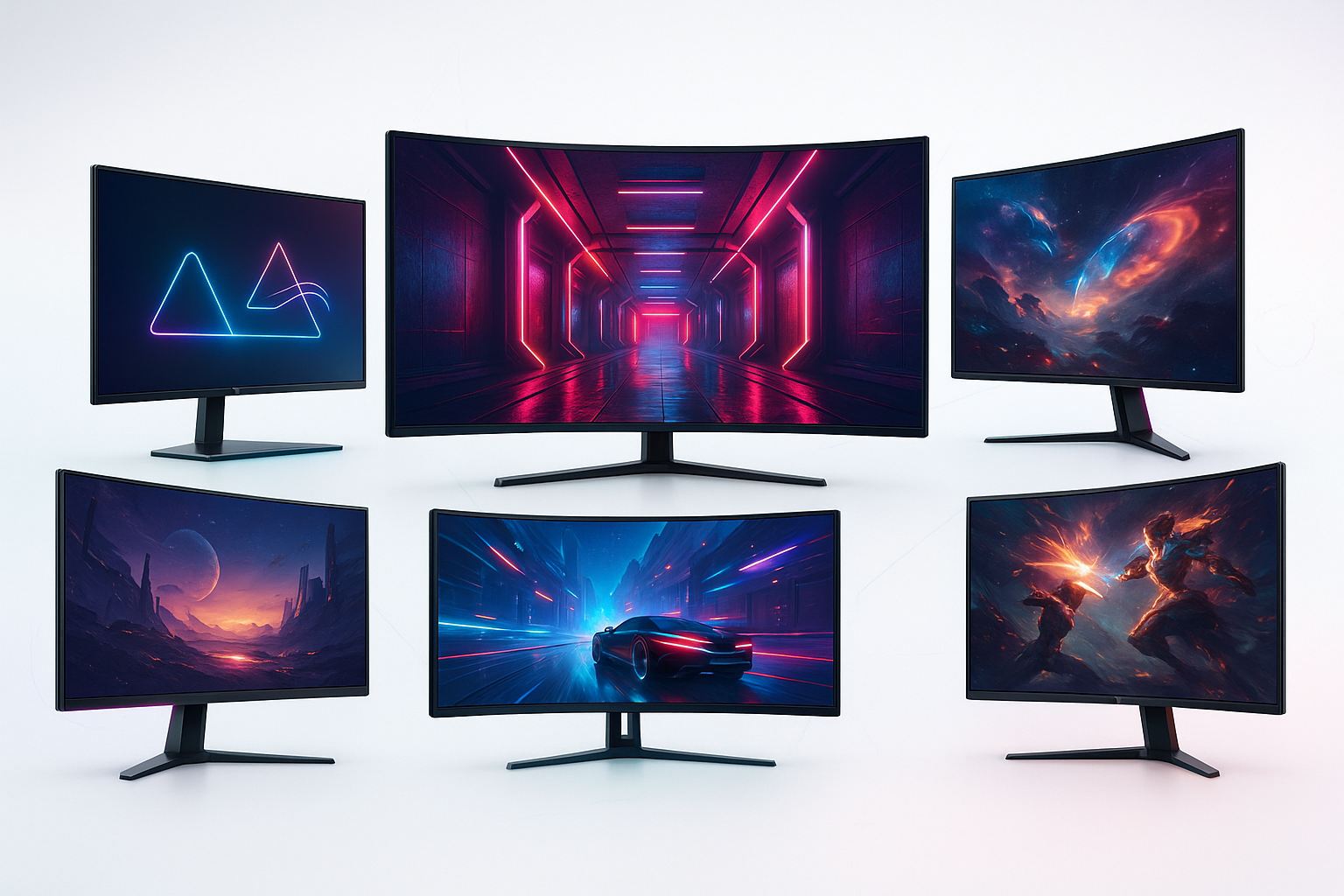
 By
By 